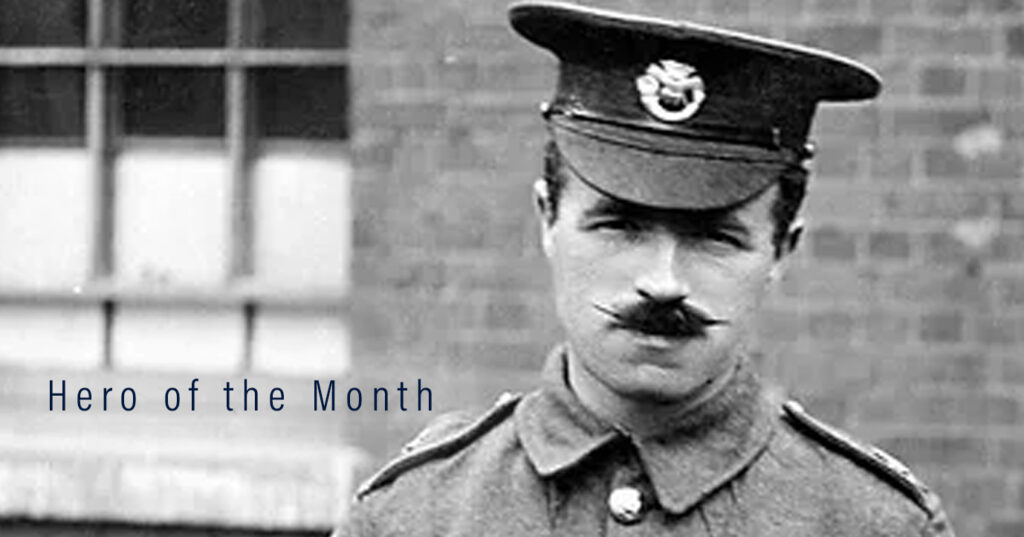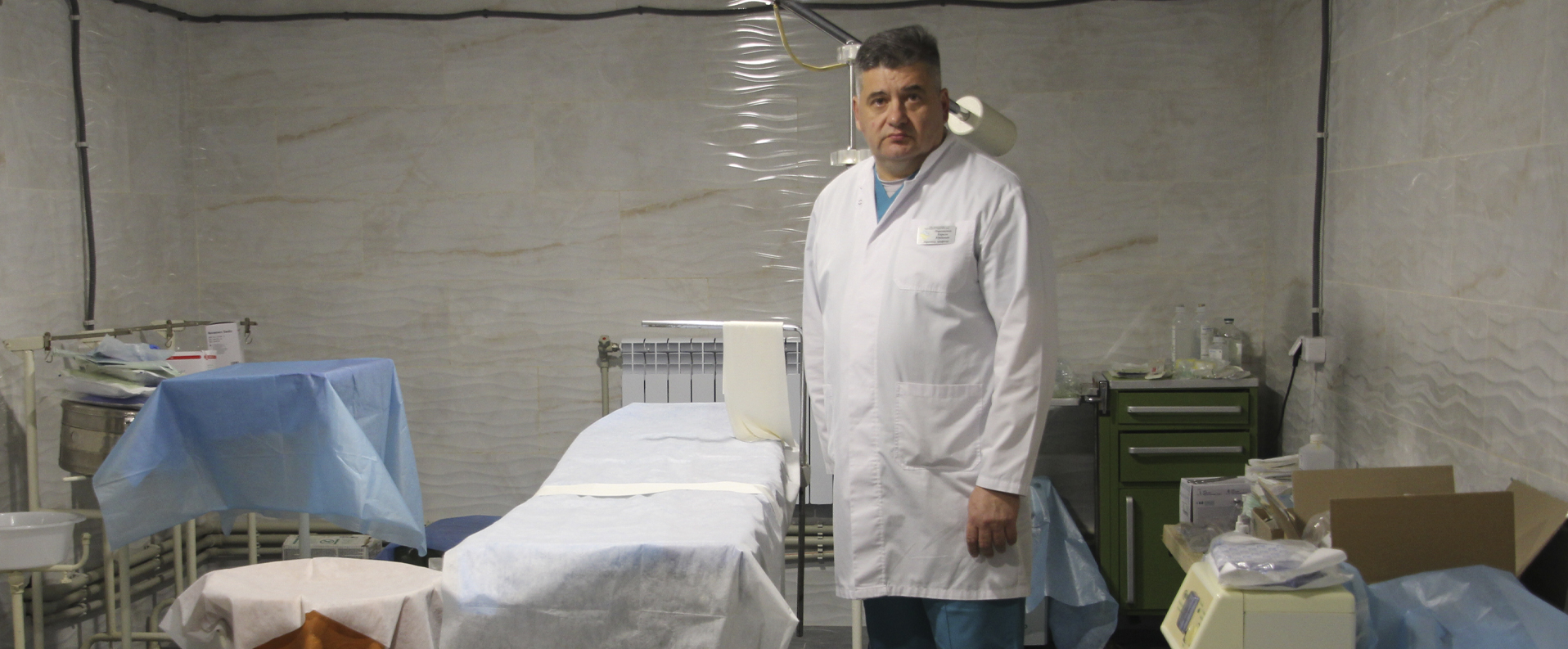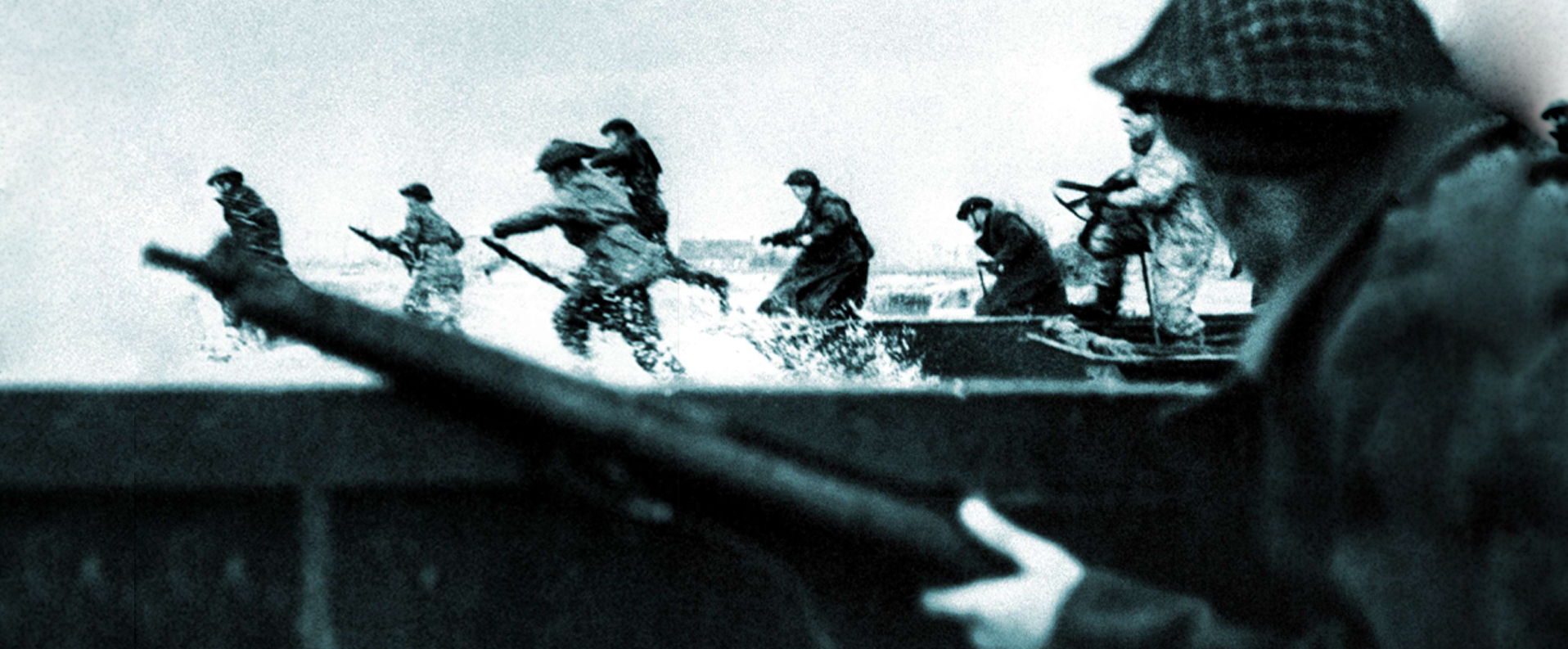
Published in Britain at War in January 2015.
Thomas Rendle: Boldness
Thomas Rendle was just days short of his 30th birthday when he took part in an action near Wulverghem, Belgium, for which he was later awarded the Victoria Cross (VC).
The son of a painter and decorator, Thomas Edward Rendle was born in Bedminster, Bristol, on 14 December 1884. Rendle was one of seven children and he and his two brothers all served during the First World War.
Rendle was educated at St Luke’s School in Bedminster before attending nearby Kingswood Reformatory. After leaving school, he joined the Army in Bristol on 5 September 1902, aged seventeen. They days later, he joined the Duke of Cornwall’s Light Infantry (DCLI) in Bodmin, Cornwall.
In the aftermath of the Second Boer War, Rendle was sent with a draft to join the 1st DCLI at Stellenbosch, Cape Colony, and the battalion remained in South Africa until March 1906. However, shortly before leaving South Africa, Rendle, who was a bandsman, married Lillian Crowe, herself the daughter of a bandsman, on 7 February 1906. After Rendle returned to Britain, the couple had two children, a daughter and a son.
Following the outbreak of the Great War, Rendle left for France on 13 August 1914. On 23 August, Rendle took part in the Battle of Mons and, when a comrade was seriously injured, he commandeered a car to take him to hospital.
Rendle went on to take part in the Battle of Le Cateau and Battle of Aisne in France and, at the end of November, the First Battle of Ypres in neighbouring Belgium. This battle formally ended on 22 November, after which trench warfare set in for the rest of the war.
It was on 20 November that Rendle showed immense courage when a heavy enemy bombardment began at 9am. At the time, Rendle was carrying out the task of stretcher bearer – a role given to bandsman in times of war.
When a shell landed and exploded on ‘A’ Company’s parapet, some fifteen men were buried in their trenches and others were wounded and killed. Rendle, however, went to the aid of the buried and wounded men.
The fierce fighting extended to the afternoon and, at one point, with enemy artillery fire at its height, an officer sitting at the bottom of a trench was hit and injured. Realising that his comrade was in need of urgent medical attention, Rendle crawled towards Second Lieutenant Colebrooke, despite the fact that enemy snipers had the position well covered.
After reaching the injured officer, Rendle administered first aid before scraping and scratching a path through the fallen earth. With the injured man on his back, Rendle eventually crawled to safety without being hit.
Although Rendle had escaped direct injury from the shell and sniper fire, his sight had been damaged by the high explosives that had detonated all around him and so he was invalided home. In the aftermath of his bravery, he was promoted to lance corporal and sent to recuperate at No. 1 Temporary Hospital in Exeter.
His VC was announced in the London Gazette on 11 January 1915. His investiture took place at Buckingham Palace on 12 July 1915 at a time when recipients of the VC were treated with celebrity status. In order to avoid the attention of the autograph hunters and female admirers outside the gates, Rendle and three other VC recipients needed a taxi to get them in and out of Buckingham Palace.
In fact, Rendle was the only member of the DCLI to be awarded the VC during the Great War and he was also decorated with the Order of St George, 4th Class (Russia). After leaving hospital, Rendle was never well enough to return to the frontline. Instead, he took part in a recruiting campaign and was employed as a musketry instructor. At one point, he found time to return to his old school St Luke’s, where he was given a warm reception by pupils and staff.
After being invalided out of the Army on 12 November 1920 with the rank of sergeant, Rendle returned with his family to South Africa where, as the recipient of the VC, he was always much respected. For many years, he was a part-time bandmaster with the Duke of Edinburgh’s Own Rifles, Cape of Good Hope, and he also worked as caretaker and stationery controller for a branch of Standard Bank. Furthermore, Rendle was an enthusiastic member of a South African veterans’ group called the Memorable Order of Tin Hats, also known as “Moths” for short.
With Rendle abroad, an imposter with the same surname – Joseph Rendle – started impersonating him around the country, using a VC that he has bought to add authenticity to his claims. However, he was eventually arrested, charged and fined.
Rendle died from a coronary thrombosis at the Groote Shuur Hospital in Cape Town on 1 June 1946, aged sixty-one. There were massive crowds on the streets of Cape Town for his funeral two days later. Rendle is buried at Maitland Road No. 1 Cemetery in Cape Town, and his VC and service medals belong to the DCLI Regimental Collection in Bodmin, Cornwall.
Download a PDF of the original Britain at War article
For more information, visit:
LordAshcroftOnBravery.com


